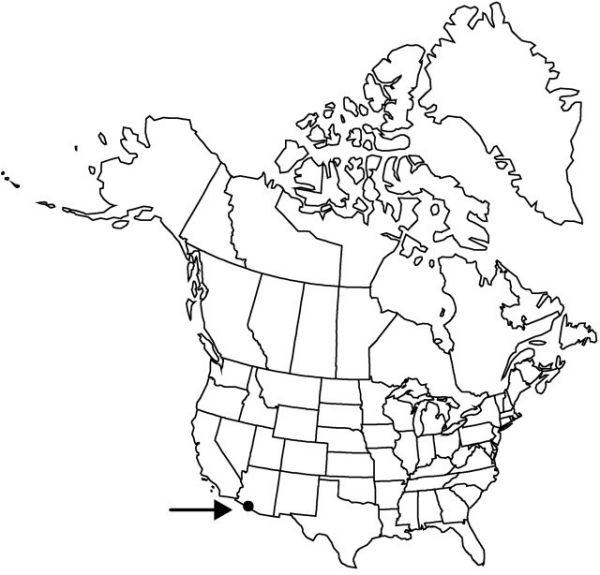Agave ×ajoensis
Novon 11: 414, fig. 2. 2001.
Plants acaulescent, freely suckering; rosettes solitary or more commonly cespitose, 1.9–4 × 2.5–4.5 dm. Leaves spreading, widest near middle, 16–34 × 1.5–3 cm; blade light green, without “budprints” but sometimes with a lighter green midstripe, linear-lanceolate, rigid, adaxially shallowly concave toward apex, abaxially thickly convex toward base; margins entire, straight, nonfiliferous, unarmed except for small interstitial teeth near leaf base; apex acute to long-acuminate, spine reddish brown, aging gray, subulate, 1.5–2.5 cm. Scape 2.5–3.5 m. Inflorescences subspicate to narrowly racemose-paniculate on distal 1/3; bracts caducous, narrowly triangular, 2–3 cm; lateral branches 30–40, ascending, 4 cm or shorter. Flowers (3–)4–6 per cluster, erect, straight, (3.2–)3.5–5.3 cm; perianth yellow, tube funnelform, (4–)6–21 × 8–13 mm, limb lobes erect to ascending, slightly unequal, 10–20 mm; stamens slightly exserted; filaments inserted equally or subequally 6–16 mm above base of perianth tube, erect, light yellow, (1.7–)2–3 cm; anthers yellow, 9–14 mm; ovary 1–1.7 cm, neck constricted, 2–6 mm. Capsules short-pedicellate, ellipsoid, 1.2–2.1 cm, apex short-beaked. Seeds unknown. 2n = 90.
Phenology: Flowering late spring–summer.
Habitat: Rocky slopes in desert scrub and grasslands
Elevation: 900–1100 m
Discussion
Agave ×ajoensis appears to be of hybrid origin involving A. deserti var. simplex and A. schottii var. schottii. It is a triploid, having a chromosome number of 2n = 90; in the same area, var. simplex is a diploid (2n = 60) and var. schottii is a tetraploid (2n = 120).
Selected References
None.
